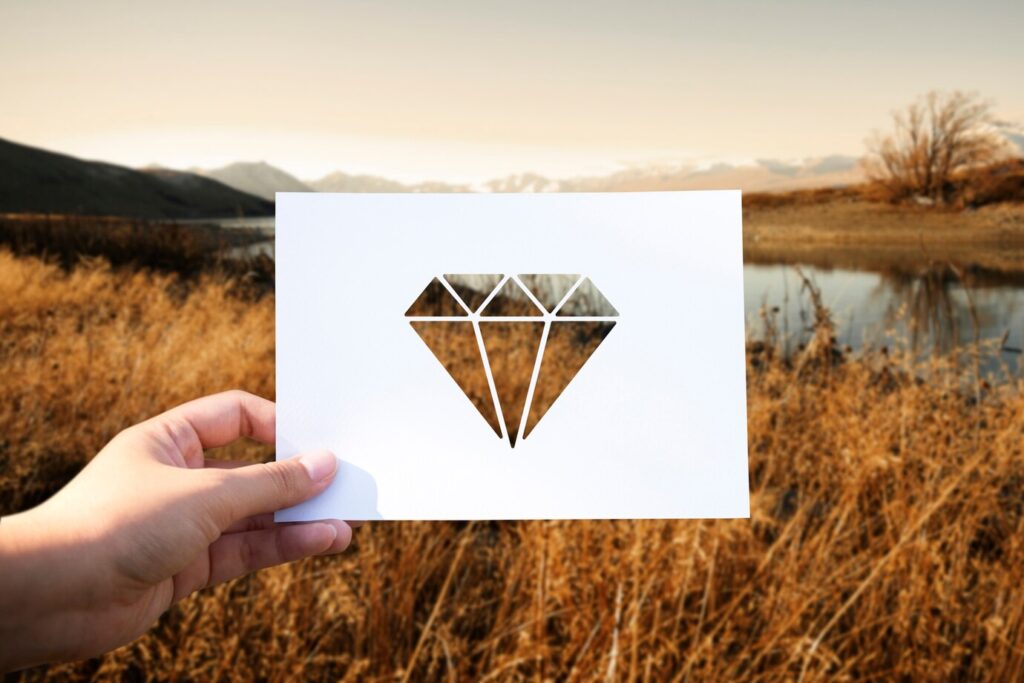Extreme temperatures and pressure transform carbon below the earth’s surface to form unique rocks known as diamonds. The arrangement of carbon atoms develops crystal-like structures called diamond cubicles, and covalent bonds hold them together. These features give diamonds crystal lattice, making them one of the hardest minerals. Here is how a jeweler cuts a diamond:
1. Planning
In the design process, the lapidarist, or gem cutter, decides the final form of the diamond, which acts as a blueprint during cutting. They also determine how to cut the stone to maximize its beauty and value. Initially, gem cutters used to sketch their desired outcomes on paper, which guided them in the later stages.
Technological advancements allow jewelers to use CAD programs and create digitized designs. Technology enables gem cutters to design and visualize their ideas in an efficient and time-saving process. Planning allows a jeweler to find the best way to create a valuable stone for jewelry while minimizing wasted diamond dust.
2. Sawing and Cleaving
This is the initial shaping process, where lapidarists use special tools to begin shaping diamonds into the desired form. They identify the diamond’s weaker side, where it will be easier to cut. Cleaving is the process of splitting a large diamond into smaller, more manageable stones that can be shaped further. When cleaving is not required, a jeweler uses sawing to cut the diamond into the desired shape. A diamond-tipped is commonly used to achieve the initial form of the desired piece.
3. Bruting
The final stage of shaping is bruting, and the diamond is refined to resemble the design created in the planning process. The diamond is mounted on a revolving lathe, and a second diamond grinds its edges to create a rough finish along the diamond’s edges. This process is repeated until the stone achieves the form designed by the jeweler.
This is also the stage where the diamond’s girdle, a thin band around its circumference, is created. Special tools with diamond-dusted tips enable lapidarists to achieve bruting, as these tools act as abrasives.
4. Polishing
In the final shaping process, polishing smooths the diamond’s rough form, giving the stone the shine it is known for. A variation of a diamond abrasive brush creates smooth and reflective facets in this process. Lapidarists position the stone in a polishing wheel coated with diamond powder. The wheel steadily moves across the surface with progressively finer abrasives to achieve a mirror-like finish. This is also the stage where all imperfections are corrected so that the piece can be forwarded for inspection.
5. Inspection
Inspection is the final counter-checking process that determines whether the diamond meets industry standards. A gemologist uses specialized tools to assess the diamond’s clarity, color, and carat weight and assigns the stone a grade based on these properties. The diamond can be returned to the gem cutter for further processing if it does not meet the minimum requirements. If the diamond meets the standards, jewelers use it in the desired piece of jewelry.
Get Your Diamonds from a Reliable Jeweler Today
Diamonds are precious stones that provide a classy and elegant aesthetic. Diamond jewelry complements official and casual outfits, making it suitable for all occasions. Before acquiring diamond jewelry, determine which design and cut best complements your wardrobe. Contact a trusted jeweler today for recommendations or purchases.

